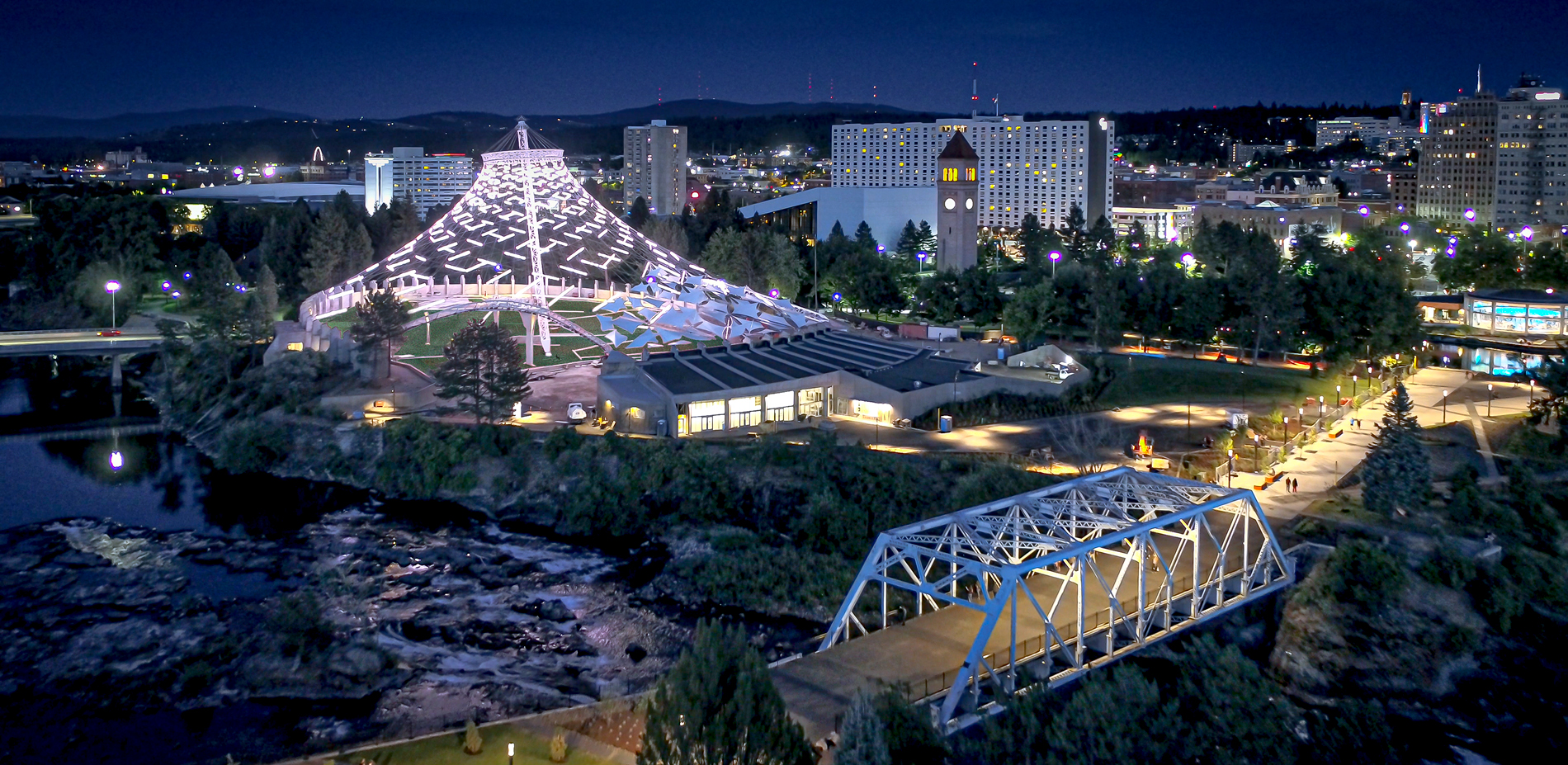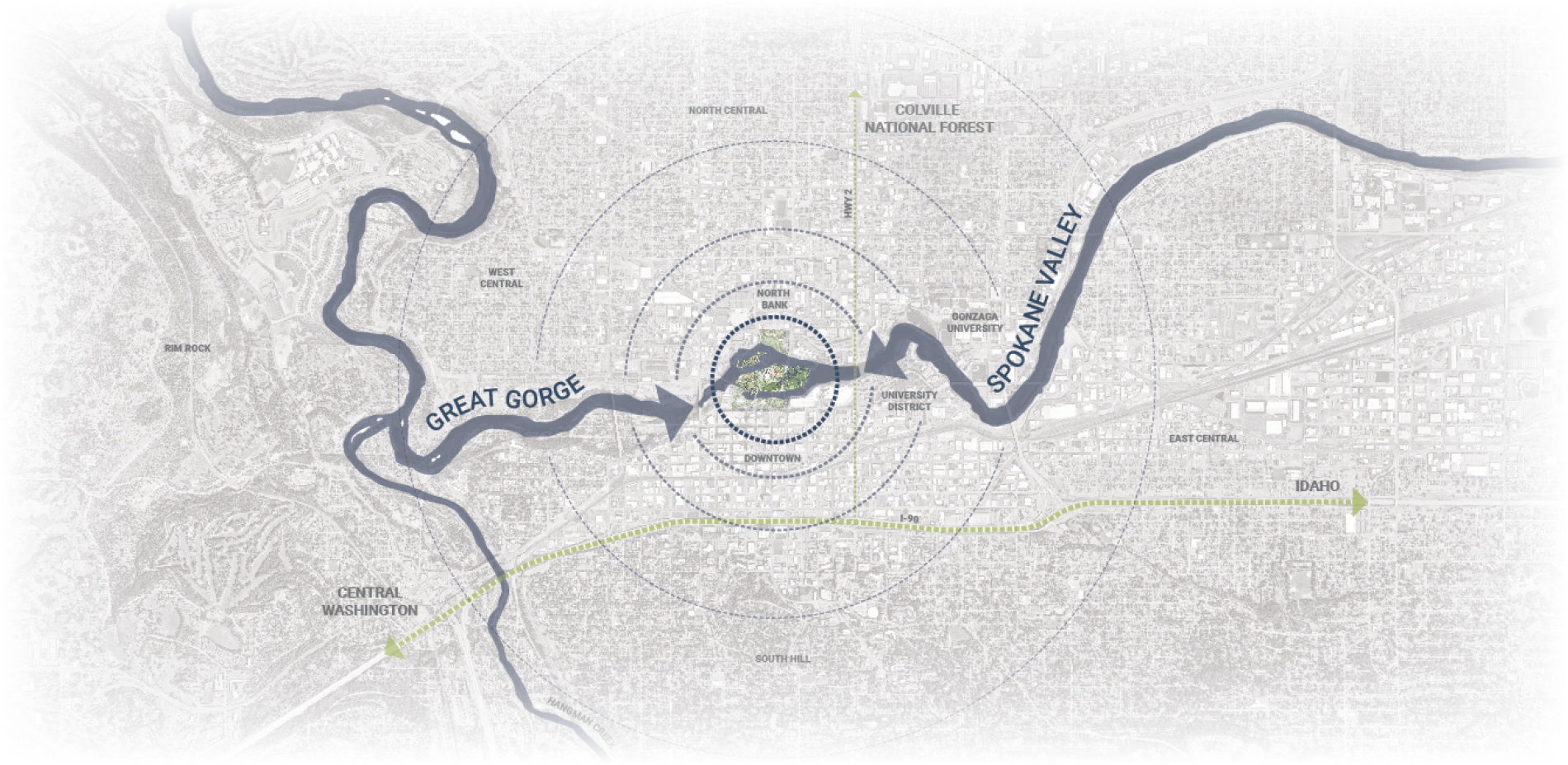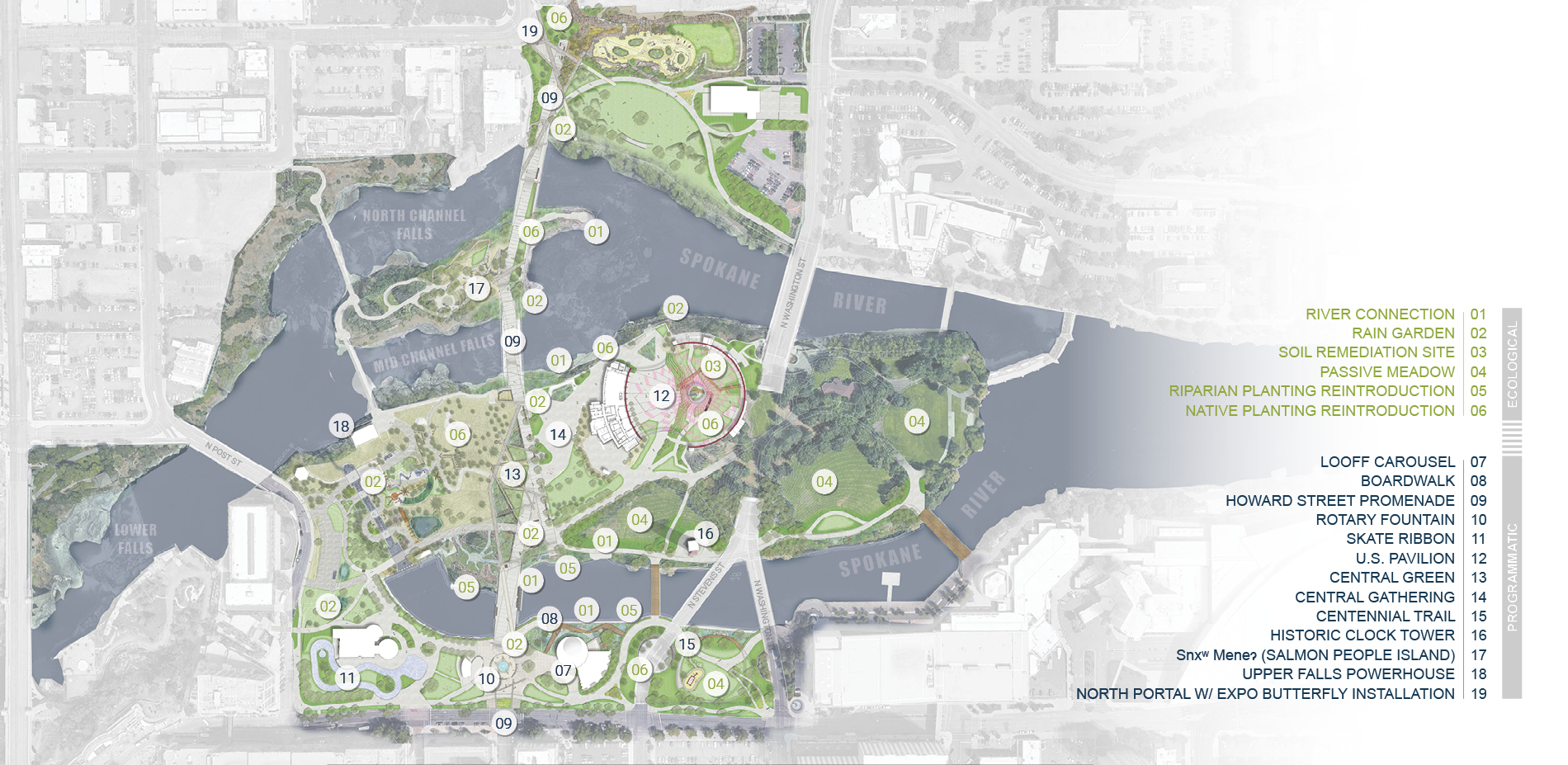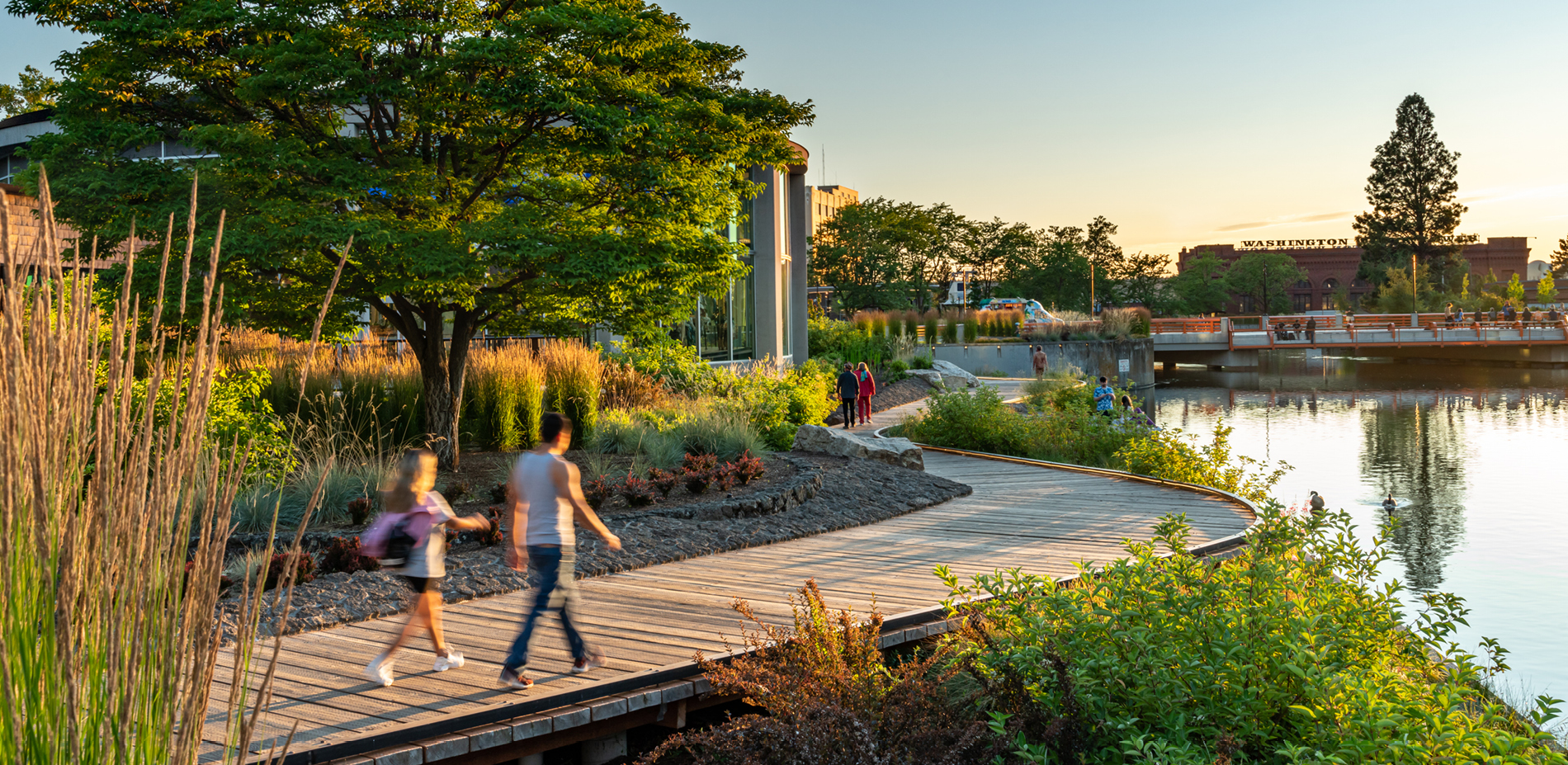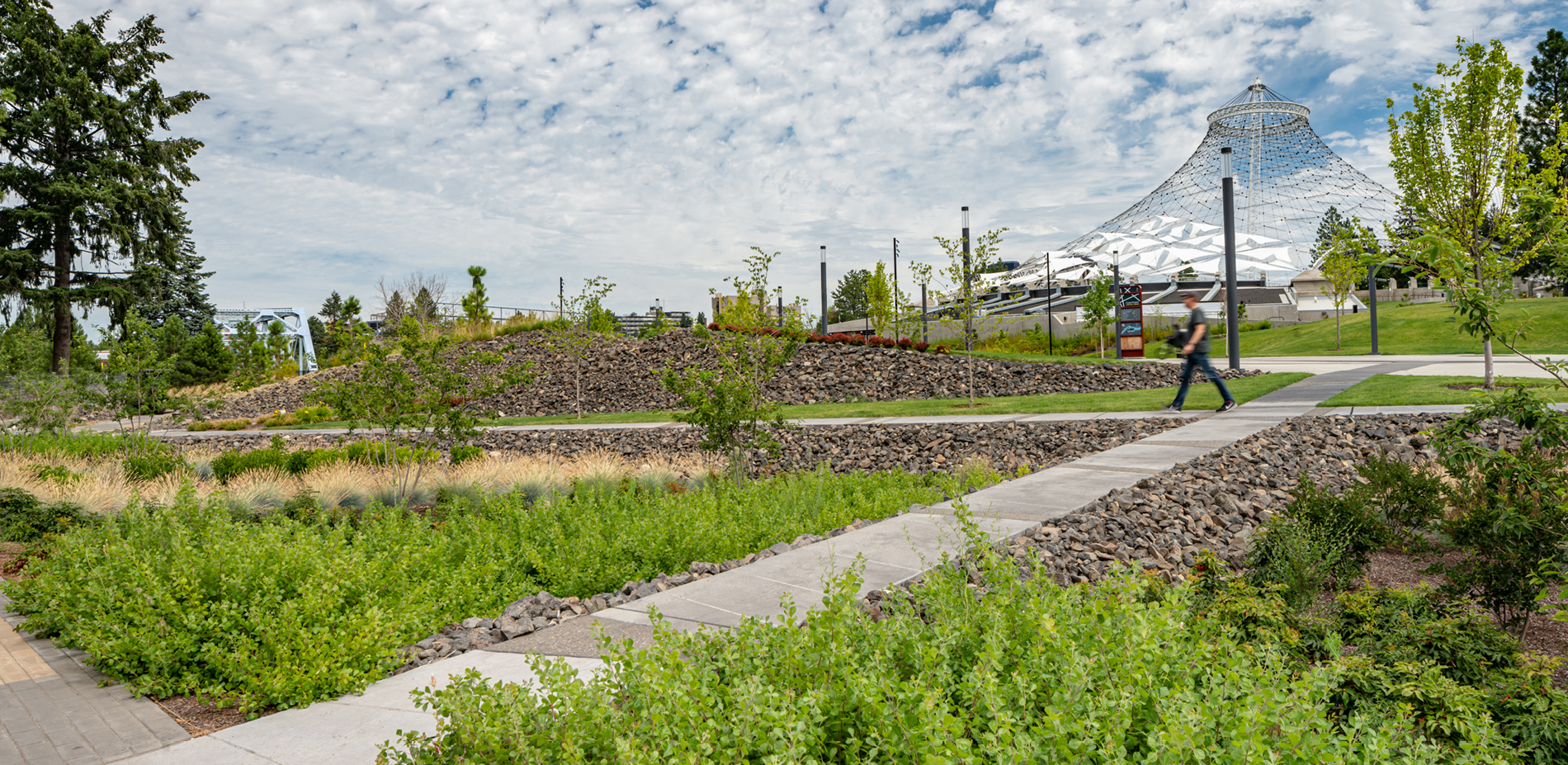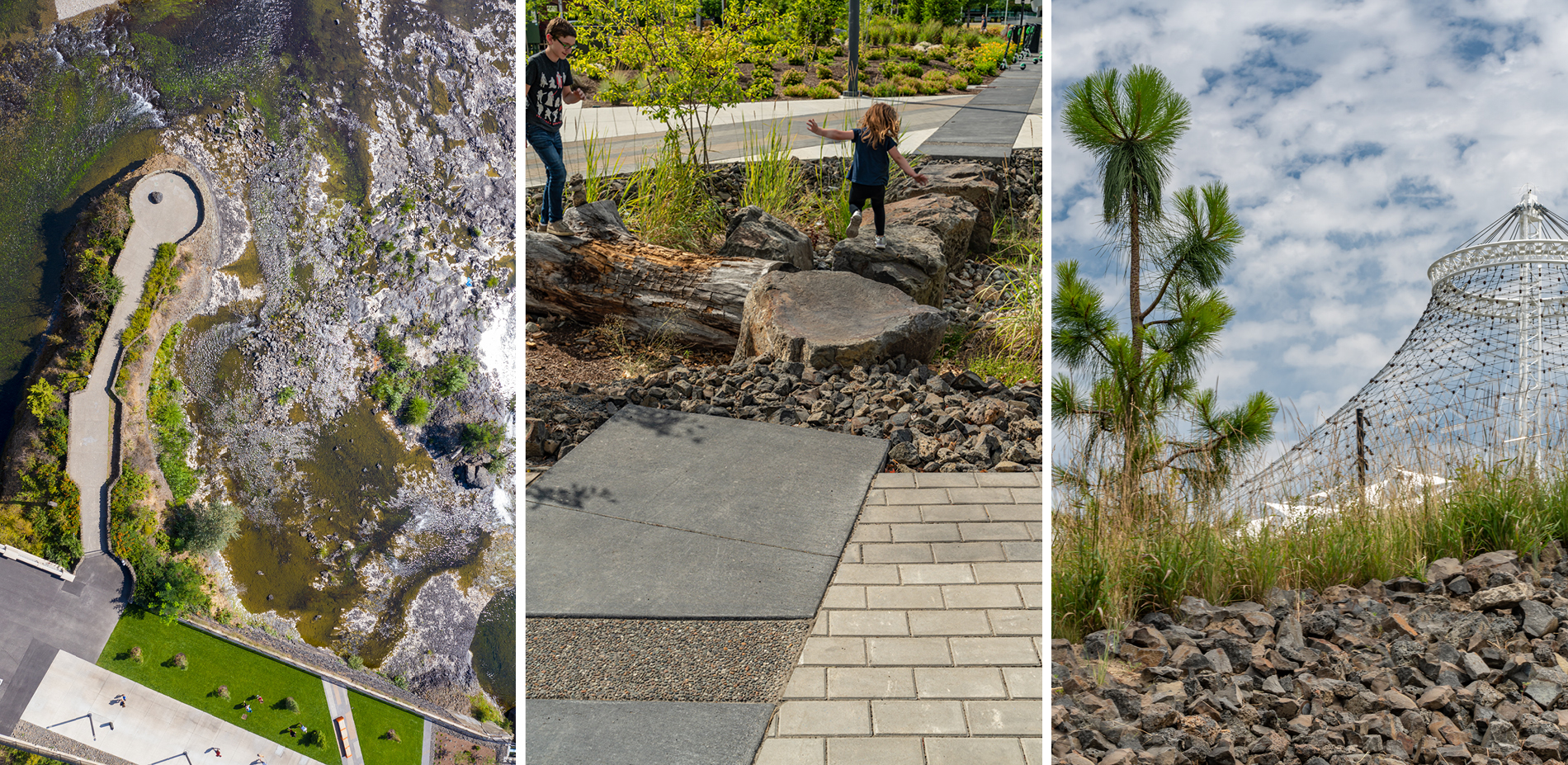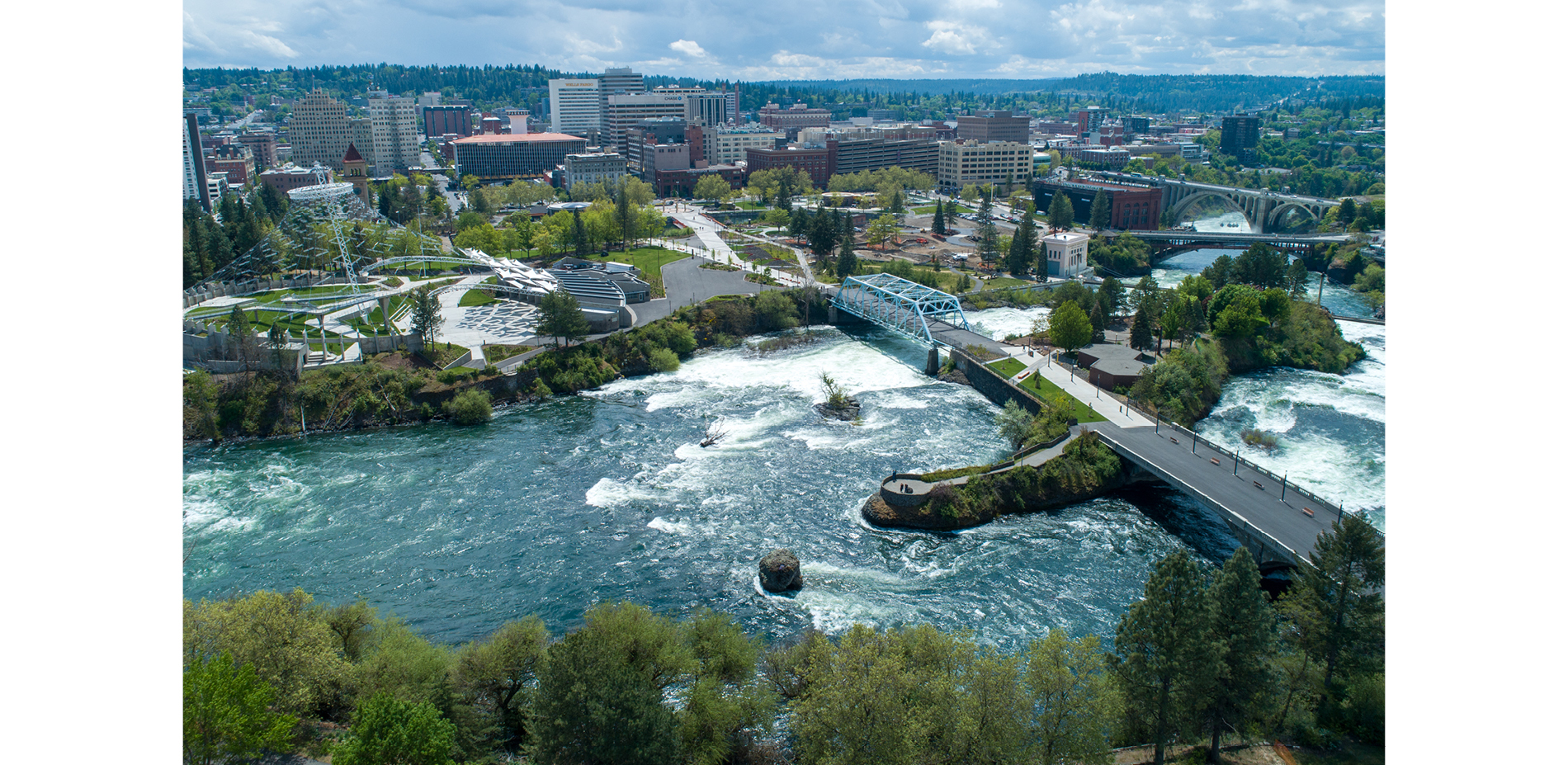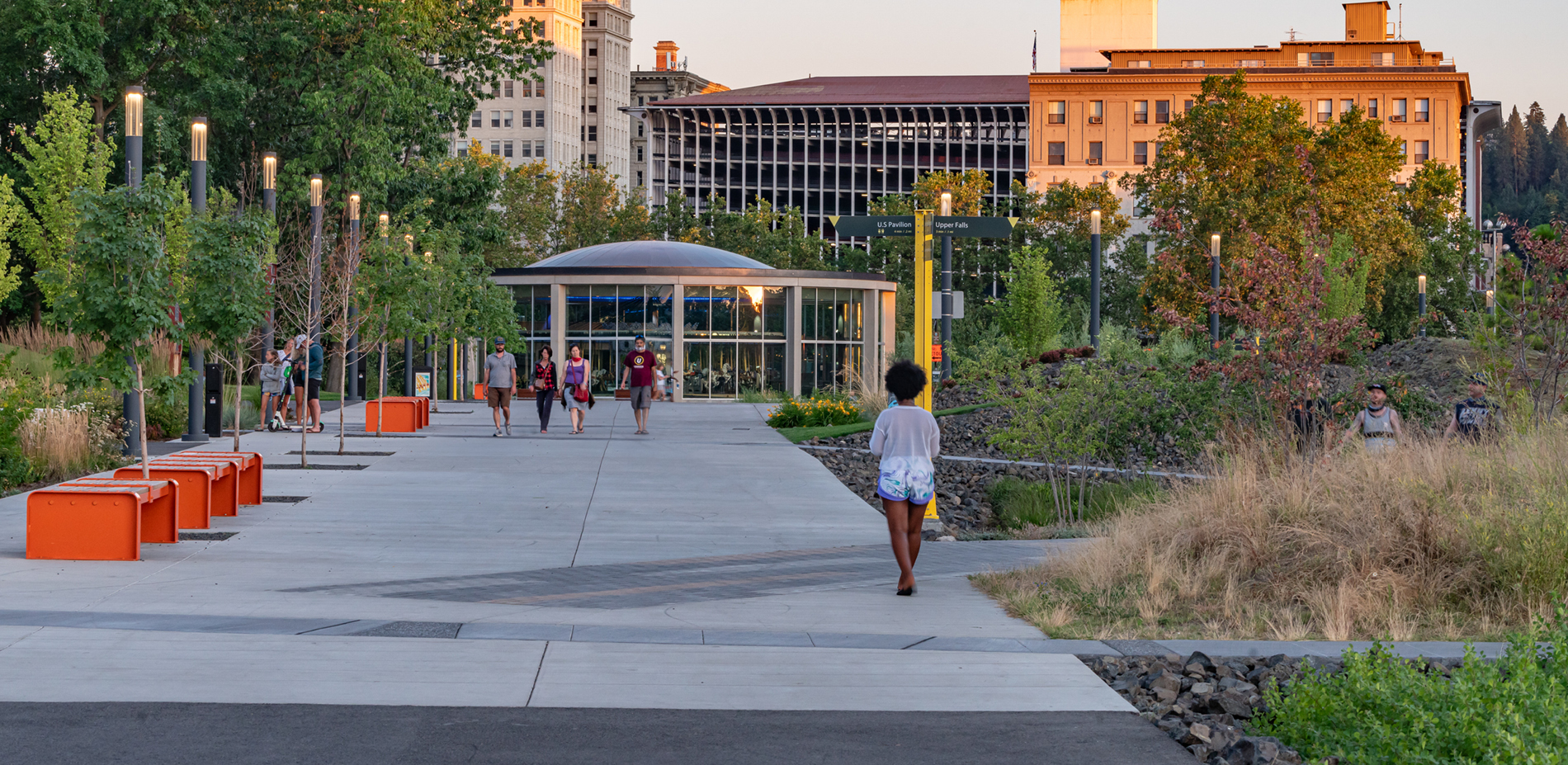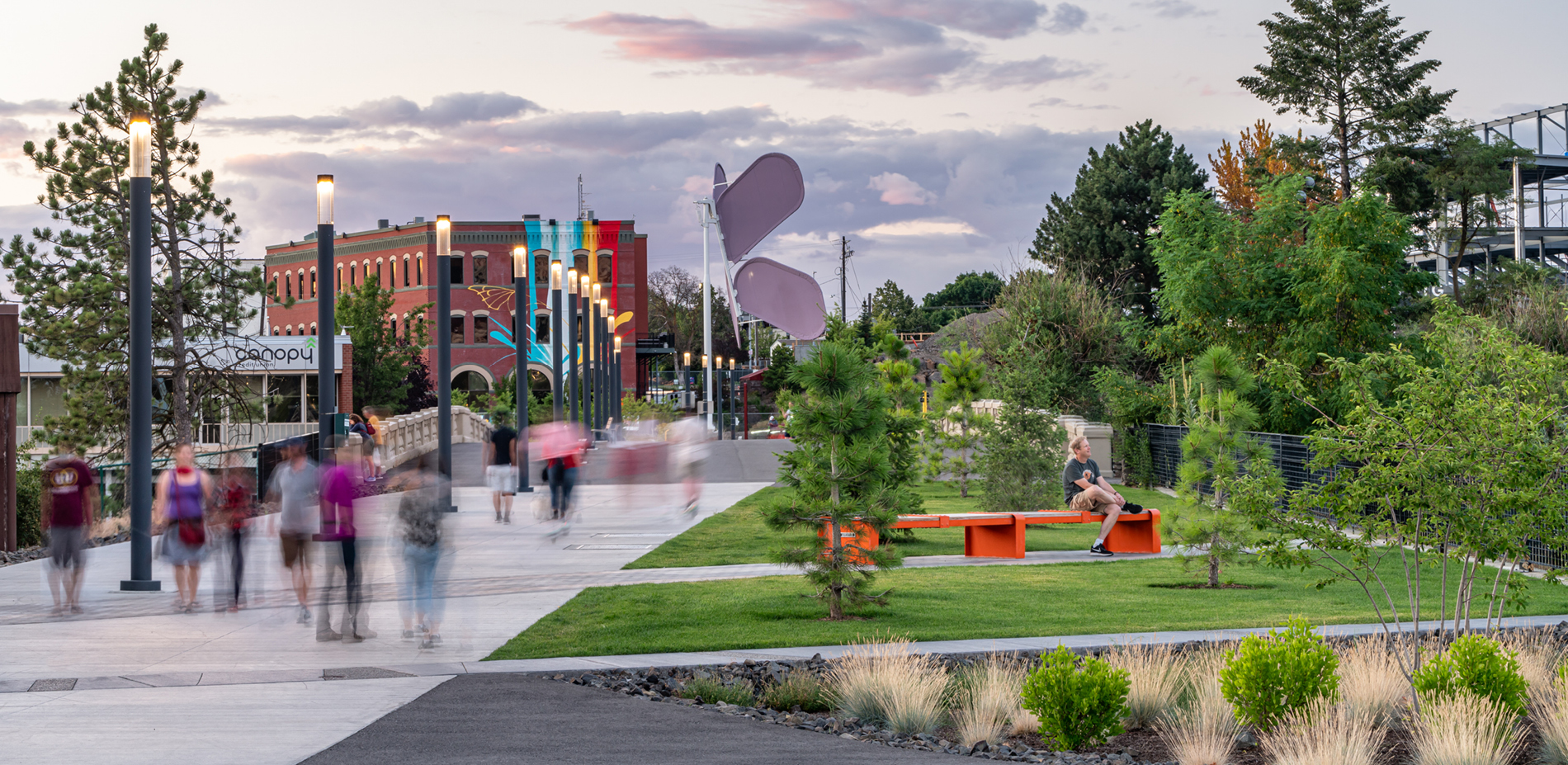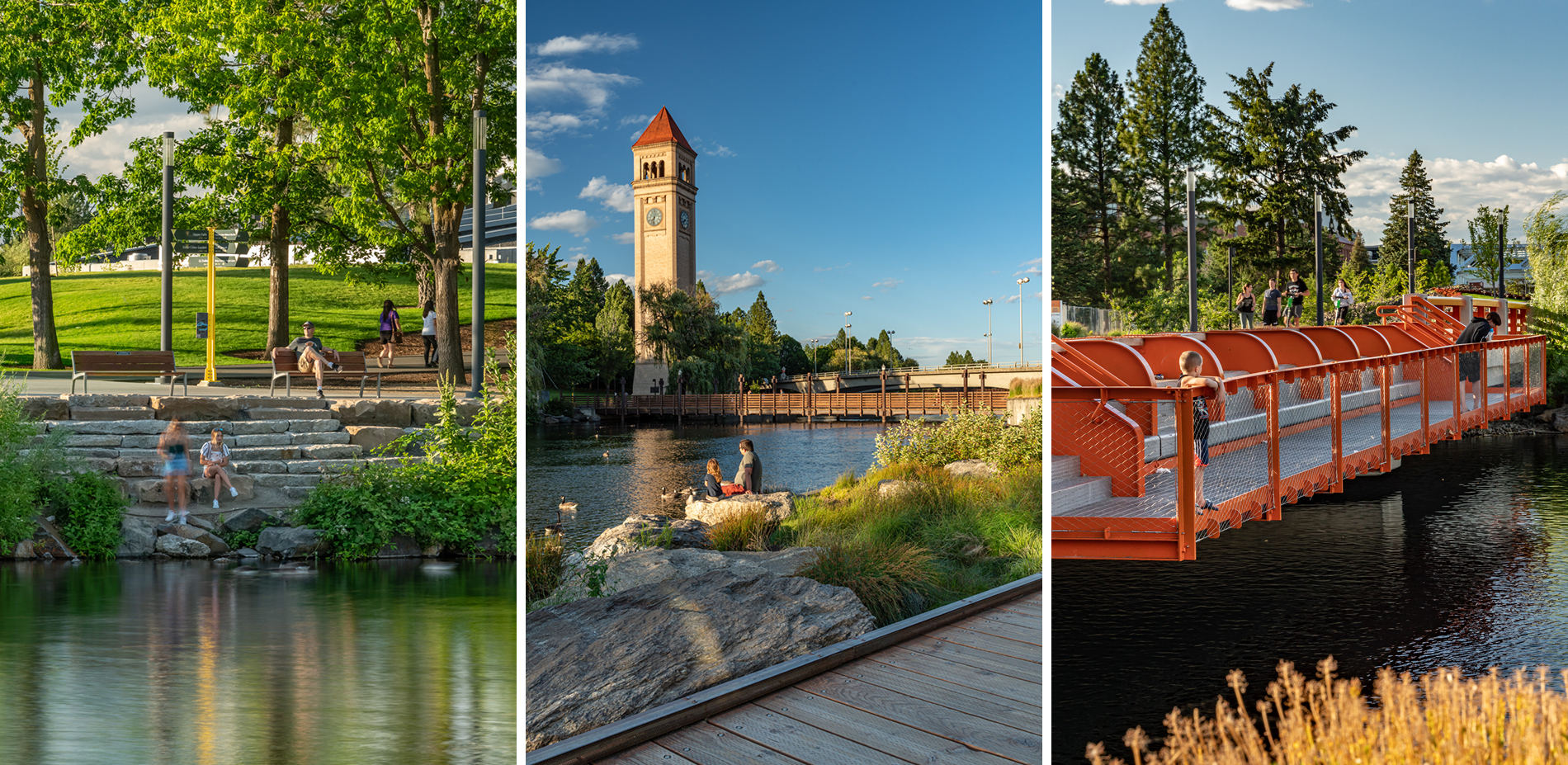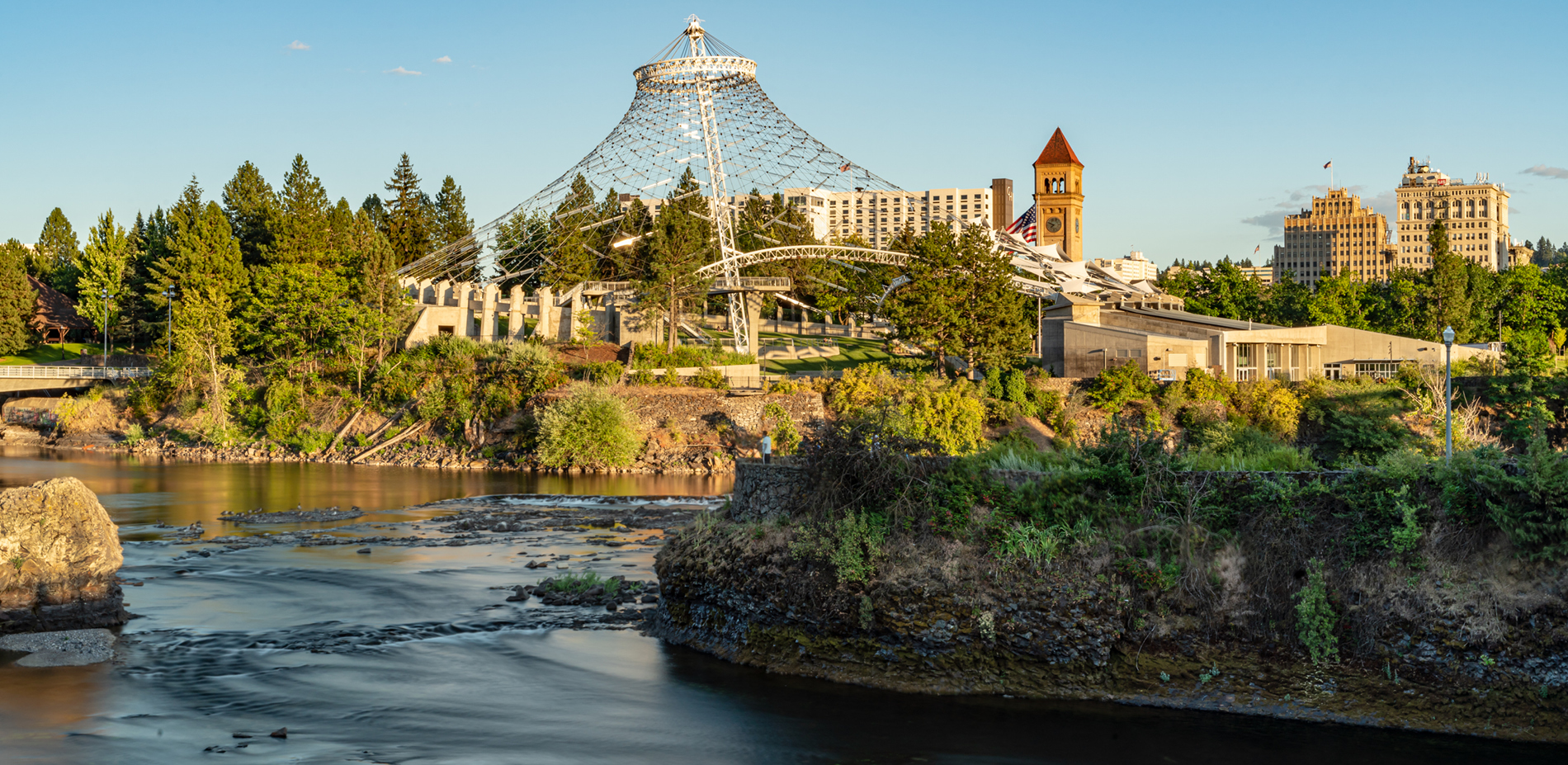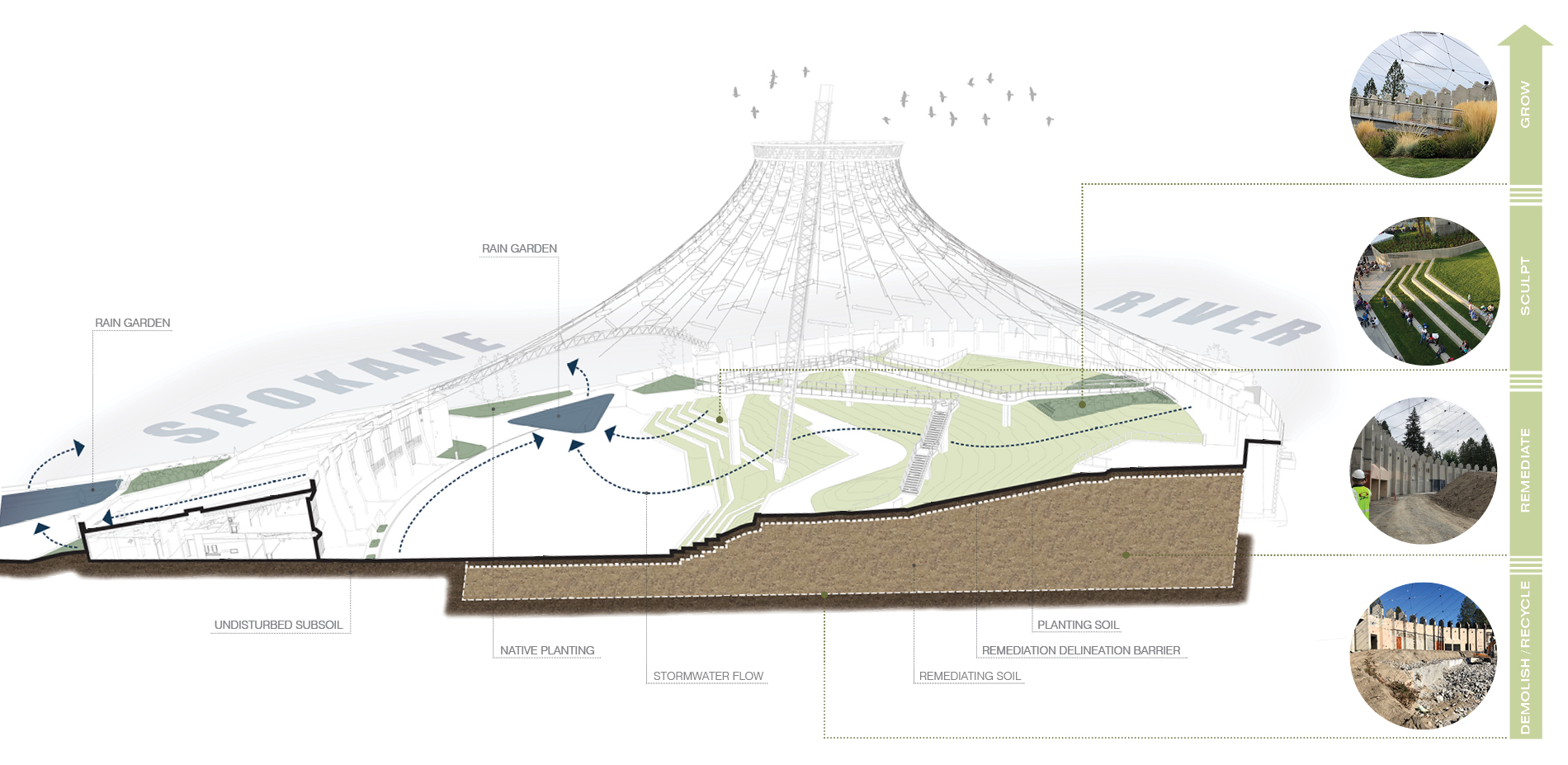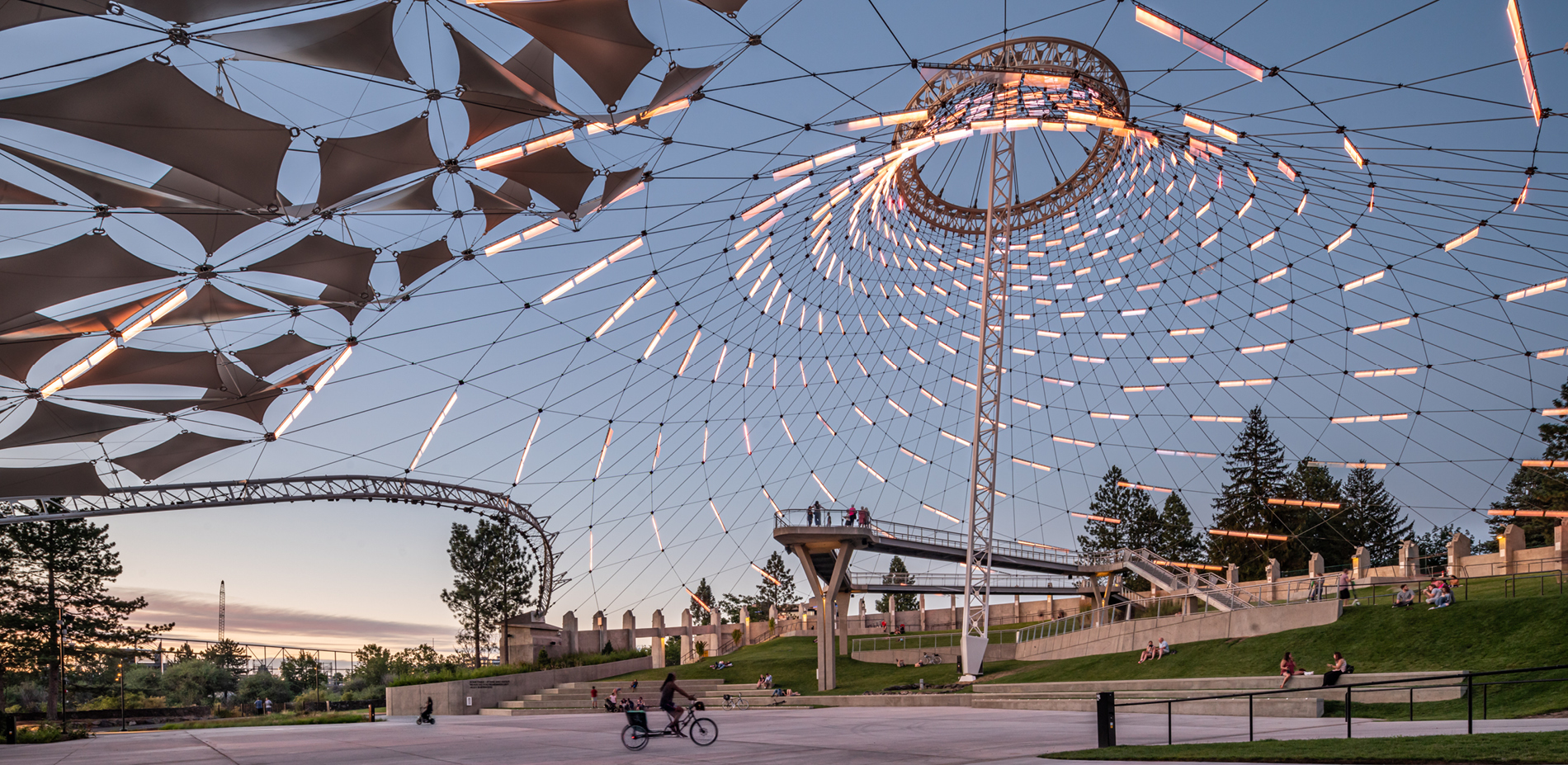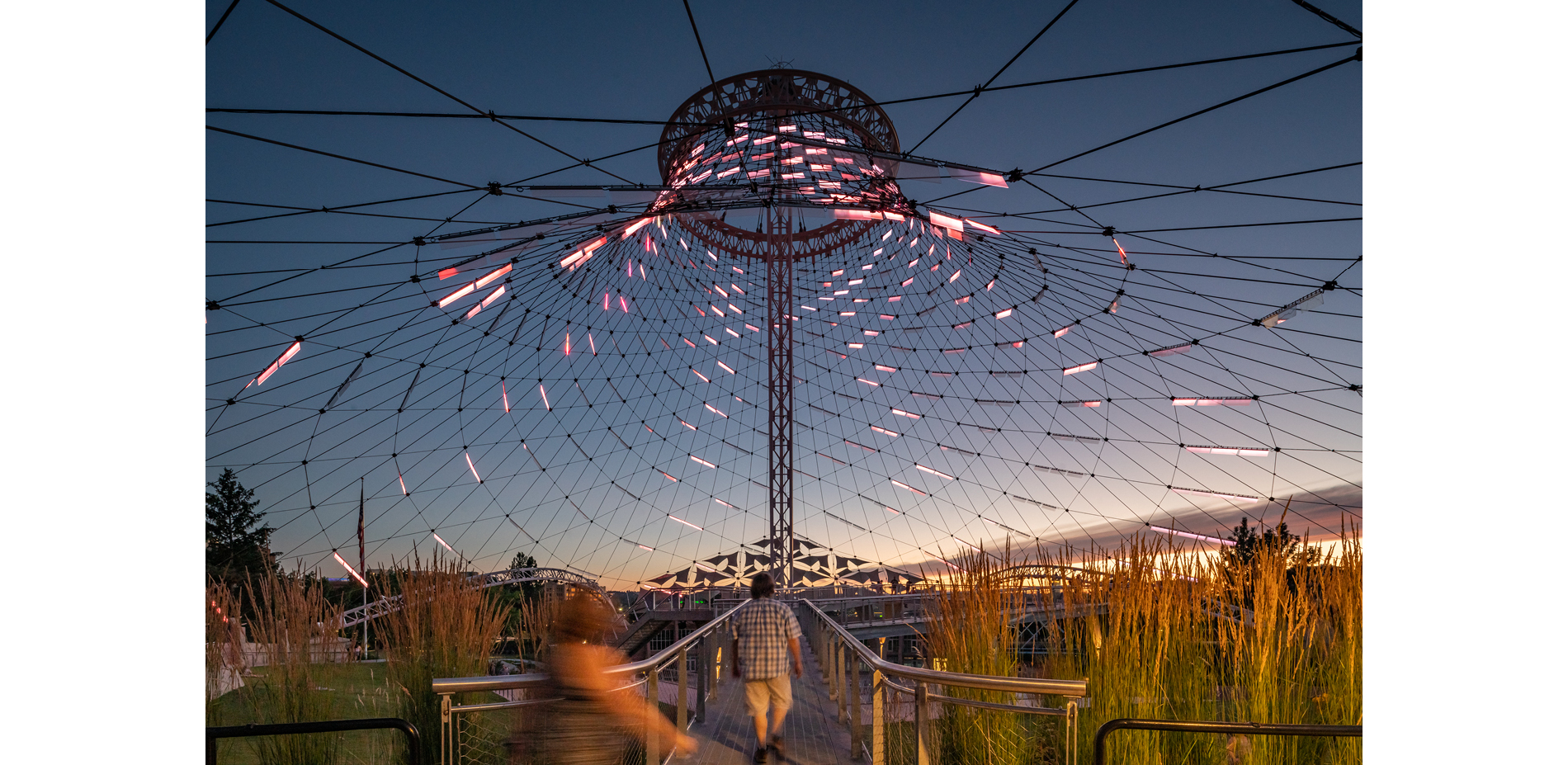Riverfront Spokane
Honor Award
General Design
Spokane, WA, United States
Berger Partnership
Client: Spokane Parks and Recreation
The reimagined Riverfront Park honors the past while transitioning to a forward-looking gathering space, becoming the region’s cultural heart.
- 2022 Awards Jury
Project Credits
Garrett Jones, Director, Spokane Parks and Recreation
NAC Architecture, Architecture and Electrical Engineering
Dark Light Design, Lighting
Jacobs, Civil Engineer
Garco Construction, Design-Build Contractor
Walker Construction, General Contractor
Land Expressions, Local Landscape Architect/Contractor
Clearwater, Landscape Contractor
Hill International, Owner’s Representative
GuildWorks, LLC, Pavilion Shade Canopies
DH, Graphic Design
Project Statement
Riverfront Park is a powerful landscape perched on rugged basalt outcroppings around the channels of the Spokane River as it plunges from valley to gorge. A sacred landscape to the Spokane Tribe, the birthplace of the city, a place of industry, reclaimed as the home of the 1974 World’s Fair (Expo ’74), Riverfront Park was a landscape cherished in memory but physically and ecologically in decline. The people of Spokane voted to invest over $64 million in a landscape architect-led reimagining of the park that both honored and moved beyond the Expo legacy to further heal the landscape from its industrial past, reconnect the city and people to their river, and reinvigorate park use and programming.
The reimagined Riverfront Park is a model for revitalizing cherished but aging civic treasures, honoring past legacy while transitioning to a forward-looking gathering space and meeting critical community needs as the region’s cultural heart. Beyond physical change, the project has helped reshape the city’s psyche. Proud of its history, culture, and character, Spokane is a city on the rise.
Project Narrative
Historical Context:
In the heart of downtown Spokane, Washington, thundering waterfalls mark where the Spokane Valley meets the great gorge of the Spokane River. The site is a sacred gathering space and historic fishing grounds of the Spokane Tribe. It became the city’s birthplace as settlement was drawn by the power of the falls, which spurred industry and freight yards. A forward-looking vision reclaimed the site into the home of the 1974 World’s Fair (Expo ’74), the first world’s fair with an environmental focus.
After the fair, the grounds became Riverfront Park, permanently transitioning the 100-acre site from industrial landscape to park. As the new century arrived, Riverfront was showing its age as venues, programming, and infrastructure declined. Aware that change and investment were needed, Spokane’s citizens passed a $64 million bond in 2014 for park improvements.
Restoring Vital Ecology:
Harnessing the river for power and industry left a legacy of environmental damage and contamination profoundly shaping the park’s redesign, planting, soil management, and stormwater treatment.
The riverbanks, profoundly altered and hardened, were enhanced with riparian plantings while embracing realities of a dam and hydroelectric facility. The design removed upland fill and hardscape to create new riparian planting including grasses and emergents (Common Rush, Indian Ricegrass, and Arrowleaf) and a woody overstory (Water Birch, Red Twig Dogwood, and Coyote Willow).
Planting native species in Spokane’s arid climate reduces water use and enhances park resiliency while also allowing park users to grow a new love of their native landscape, bringing balance to a landscape previously dominated by lawn and eastern hardwoods. Trees and shrubs include Rocky Mountain Maple, Serviceberry, North Plateau Ponderosa Pine, Snowberry, and Ocean-Spray. Planting includes extensive use of grasses including Blue Oat Grass, Indian Ricegrass, Blue Indian Grass, Great Basin Wildrye, and Switch Grass. Basalt talus is embraced as a mineral understory under much of the planting, as is common in the regional natural landscape.
Addressing historic soil contamination, all surfaces drain to lined stormwater gardens, eliminating percolation through underlying contaminants that would leach into the river. Tons of ‘dirty dirt’ were mitigated onsite, shaped as valued topography in the pavilion’s seating bowl, covered with a protective barrier, and capped with two feet of clean soil and plantings. The pavilion redesign also converted relic structures into green space.
Reconnecting People, City, and River:
Riverfront Park is defined by its river, yet visitors were oddly removed from experiencing that river. New features bring people closer to the water with paved shorelines replaced by riparian planting, a boardwalk and large local boulders inviting scrambling to water’s edge. Terraced stone seating cascades waterward and a new bridge features steel-grated cantilevers for people to “float” above the river’s surface while enjoying iconic views.
Located at an important intersection of downtown and emerging neighborhoods, the park is now an integral stitch in the city’s fabric, with the Howard Street Promenade spanning north to south as a bike and pedestrian-exclusive link, its three legs shaped by river crossings and aligning with new and old city icons. The promenade crosses three river channels on unique bridge experiences, each enhanced to strengthen the connection to the river. A complementary east/west promenade provides a missing link in the 63-mile Centennial Trail.
The promenade is becoming one of the city’s great cultural gathering places, Spokane’s paseo, and a place to meet and be seen. Interwoven within the promenade are paths of discovery connecting to eddies of activity including viewpoints, seating berms, art, rain gardens, curated plantings, and native ecologies. These endlessly possible routes and experiences are all universally accessible. In addition to its daily passive use, integrated permanent festival infrastructure welcomes an intensive schedule of pop-up programming and festivals.
The park’s north bank was transformed from gravel parking lot into park space, recapturing the area as a complement to the downtown-adjacent south bank, with a new portal featuring the beloved Expo ‘74 Butterfly welcoming the surrounding community and connecting directly to Spokane’s arena, interior sportsplex, and new soccer stadium, forming a contiguous public campus.
Reinvigorating Programming:
The park’s south bank serves as gateway and destination, with attractions including the historic 1909 Looff Carrousel, rehoused in a building designed as a glass drum, which allows riders to fully enjoy proximity to the river and views of the native planting along the restored, naturalistic riverbank. The beloved interactive Rotary Fountain was reimagined with new site design. A Skate Ribbon and café now claim the park’s most urban corridor and incorporates the Skyride gondola over the lower falls.
The park’s Havermale Island is home to the iconic pavilion, built for Expo ’74 and long defining Spokane’s skyline. Historically, the pavilion was intriguing from afar but underwhelming upon arrival, filled with closed and outdated novelty attractions. The reimagining of the pavilion erred on subtraction over addition, unburdening the pavilion of all structures but the historic net, tension ring, and mast. The remaining space was treated as a terrarium of topography, terraces, paths, and catwalks. Its cables feature programmable “light blades” that generate a magical nighttime lightshow, transforming the space into a venue for up to 5,000 spectators.
A key feature of the pavilion is its elevated experience, a series of grated catwalks rising over the landscape into the volume of the net, providing views to the river and downtown skyline, all universally accessible. Many great cities have icons, but all too often it is a private, pay-to-play experience, but the pavilion is proudly a public place, where all are welcome at no charge to bask in its glow.
Revitalizing Community:
Community engagement was at the heart of building support and shaping the design including work with the public, stakeholder groups including the disabled community and the arts community. Most unique and rewarding was engagement with the Spokane Tribe, which forged a richer and more genuine relationship between city and tribe continuing beyond this project. The tribe helped shape both process and outcome, including the renaming of Snxʷ Meneɂ (sin-hoo-men-huh), which means Salmon People, a basalt stone outcropping between two falls, and one of the most desirable destinations in Riverfront. The island is now recognized as a place of storytelling and honoring the Spokane Tribe as a living culture experiencing new growth and success.
Equity was an important goal of the project. The park provides affordable family entertainment, with free and low-cost community programs. The grand opening showcased the goal’s success, as thousands gathered for a free weekend celebration with live music, fitness programs, a kids’ zone, native cultural presentation, food vendors, beer garden, and light shows.
Beyond universal access, the park provides universal experiences with powerful sensory moments. The pavilion’s elevated experience is accessible through ascending serpentine ramps, and the park’s signature art piece, Stepwell, welcomes wheelchairs to move through the piece, not just around it. Two new playgrounds are fully accessible for children of all skills and abilities.
Surpassing All Expectations:
The impact of the project has surpassed all expectations. Since reopening, the community has embraced the park as “the” civic destination for passive gathering and life events including weddings, proms, and more. The promenade has weekly pop-up events such as markets and food-truck rodeos, and the pavilion hosts a concert series and weekly markets throughout the year. The park continues to host the biggest community festivals. The project has also shown that targeted, surgical investment in a park, while significant parts remain largely unchanged, can still reinvent the park as a whole and rebuild community use and support.
Even as COVID-19 upended the park’s planned programs in its first year of operation, the park thrived with management nimbly transitioning to pop-up events, art, and appropriately distanced social activities. The pavilion also hosted Spokane’s high school graduations when no other space could meet distancing requirements, forging a strong sense of community when it was so desperately needed.
Products
-
Furniture
- Phoenix Company
- Western States Steel & Fabrication
- mmcité
-
Irrigation
- Rainbird
- Hunter Netafim
-
Lumber/Decking/Edging
- Black Locust Lumber
- Doug Fir
- Site Salvaged Snags
-
Hardscape
- Abbotsford Concrete Products
- Central Pre-MixSunrise Rock
- Site Salvaged Sandstone & Granite
-
Lighting
- GVA Lighting
- BK Lighting
- Valmont Industries
Plant List
- Ponderosa Pine
- Douglas Fir
- Coyote Willow
- Water Birch
- Serviceberry
- Rocky Mountain Maple
- Basin Wildrye
- Indian Ricegrass
- Red Twig Dogwood
- Large Leaved Lupine
- Arrowleaf
- Yarrow
- Tall Oregon Grape
- Nootka Rose
